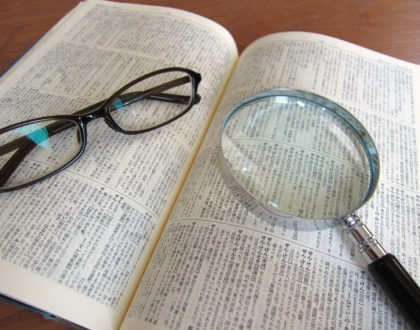Writing business e-mails in Japanese: Requests

by Florian
Writing Japanese business e-mails can certainly be a challenge, but with the right approach, it doesn’t have to be a nightmare. Read up on what to look out for and check some example messages in this article.
コンテンツ
Text-based business communication
While Japan has long been (in)famous for still using fax machines in [insert current year here], e-mails are the most widely used business communication medium (at 96.5%), followed by the telephone (90%) and direct meetings (68.8%). These “top three” haven’t changed since 2011.
Naturally, being able to write business e-mails is key for working at a Japanese company. It’s also something many learners dread or lack the motivation to learn (I’m speaking from experience here).
One reason for why people struggle with business e-mails is that they require the use of honorific language, which even many Japanese have a hard time mastering. However, because of their template style, mails in a company setting are not as high a hurdle as they first seem.
Stylistic Differences
Business e-mails and chat messages in Japan are typically longer than their non-Japanese equivalents. That is because they are highly formalized, following certain patterns that include typical greetings, certain formal expressions, etc.
Following these patterns is seen as showing a form of basic respect towards the person you’re addressing. Chances are you’ll be expected to keep to that style even if you don’t have a draconic boss who mercilessly criticizes you for every small expression slip-up.
The formalized structure makes it harder to get into written business communication in Japanese. However, in the long run, it’s easier than it seems. Once you figure out the basic structures, you can essentially copy & paste most of the content, only exchanging the case-specific parts.
The Basics
Keep the title short
At least in this respect, e-mailing in Japanese isn’t different from anywhere else in the world. Your e-mail title should be concise while efficiently conveying what you want to say. Brackets are sometimes used to highlight the main topic of the message. Often-used bracket types include square brackets [] (角括弧, かくかっこ), corner brackets 「」(かぎ括弧, かぎかっこ)and lenticular brackets 【】 (隅付き括弧, すみつきかっこ).
Know your greetings and tone
The greetings you use at the beginning and end of your e-mails and messages will change depending on who you’re writing to.
When writing to someone within your own company that you’ve interacted with before (e.g. someone from the same department), leading with just お疲れ様です (おつかれさまです) is fine. If the person is a client or another person that you or your company is (contractually or socially) “indebted” to, be sure to use いつもお世話になっております (いつもおせわになっております).
Putting the company name (when writing to clients) and department name as well as your name at the beginning is also considered good form, even if you’re contacting the person fairly regularly.
So, when writing to a person within your company, you will want to use this:
お疲れ様です。
広報部の○○です。
(Thank you for your hard work.)
This is ○○ from the PR department.
And when writing to a client or someone else outside of the company, this:
いつもお世話になっております。
△△△△株式会社広報部の○○です。
That you for your continued patronage.
This is ○○ from the PR department of △△△△ company.
As far as tone goes, you’ll most likely be expected to write in Keigo (honorific language). Often, that’s true even for co-workers that you tend to interact casually with in person. If you ask me, many Japanese simply do it this way because they’re used to writing e-mails in the formal style. Doing so also reduces the risk of mistakenly slipping into the wrong tone when writing to a higher-up or client.
Follow the established patterns
In general, “going freestyle” isn’t encouraged much in your typical Japanese company. Often, it is considered a privilege of the higher-ups or those with a lot of experience on the job.
When you’re just starting out, you’re expected to follow the rules precisely – basically, you’re allowed to break them only once you’ve completely internalized them. So, don’t try to weave your quirks and personal style into your mails too much and just follow the established conventions.
Don’t let your lines get too long
The wider the width of a paragraph, the harder it becomes for the reader to identify the beginning of the next line. This is true for every writing system, but Japanese (and a few other languages, e.g. Chinese) requires some extra attention.
While Japanese writing DOES feature some lowercase letters (the small つ, for example), the overwhelming majority of characters are of the same height. If possible, the important parts of a sentence should be at the beginning of a line so they’re easier to spot when skimming the message. So be sure to frequently use line breaks, wherever they make sense.
Keeping each line short doesn’t have to mean that the sentences have to be short too, by the way. Formal Japanese is often littered with run-on sentences that are separated into smaller “bites” by line breaks. Of course, writing sentences that are as long as possible shouldn’t be your end goal.
Don’t apologize too much
In Japanese, you find yourself apologizing frequently, often for things you wouldn’t even think of apologizing for in your mother tongue. However, even in Japanese, you can overdo it – more isn’t always better.
Apologizing once (in the beginning or at the end of your message) is fine, apologizing twice is appropriate if you’ve made a huge mistake or are asking for a big favor. But when you put in even more apologies that end up making the main message unclear or hard to understand, it’s time to stop. The same thing applies to expressions of gratitude.
Making a request
Now that we’ve gone through the basics, here are some examples of internal and external e-mails. The parts in brackets are directly translated snippets that you probably wouldn’t use in an English e-mail.
Example 1: Rescheduling a meeting (internal)
JAPANESE
件名:【〇月〇日】MTG時間調整について
〇〇課長
お疲れ様です。△△部の◇◇です。
明日の会議について確認したいことが一点ございます。
クライアントの都合で12時からの開催が難しくなっております。
午後の16時に変更したいと考えておりますが、
○○さんはお時間のご都合はいかかでしょうか?
忙しいところ恐縮ですが、ぜひ参加していただきたいので、
午後なら16時以外でも参加可能な時間帯を教えていただければ幸いです。
何卒よろしくお願い致します。
ENGLISH
Title: (month) (day) Meeting reschedule
Dear Mr/Mrs 〇〇 (section chief)
(Thank you for your hard work.)
This is ◇◇ from (the) △△ (department).
There’s one thing I want to ask you about the meeting tomorrow.
Due to circumstances on the client’s part, it looks like we won’t be able to hold the meeting at 12.
We’re currently thinking about rescheduling it to 4 PM. Will you be able to join us at that time?
(I’m sorry to bother you with this, but) It would be good to have you there, so if 4 PM doesn’t work for you, let me know if there’s another time slot in the afternoon where you could join.
Sincerely,
(your name)
Example 2: Requesting documents (internal)
JAPANESE
件名: 【重要】「□□□□」資料作成のお願い
○○さん
お疲れ様です。△△部の◇◇です。
前日のミーティングでお話ししたDL資料について連絡させていただきます。
突然のお願いで
大変申し訳ありませんが、次のウエブサイト更新日に公開予定なので、
作成をお願いしたいと思っております。
資料を下記のとおりご用意いただけますでしょうか。
・対象資料: 新サービス「□□□□」についてのクライアント向けDL用PDF
・必要ボリューム:6ページ
・希望日時:◯月◯日定時まで
※資料の具体的な内容については添付PDFファイルをご参照ください。
完成した資料をPDFファイルにてお送りください。
何か質問がございましたらいつもご連絡ください。
お忙しい中、恐縮ですが何卒よろしくお願いいたします。
ENGLISH
Title: [Important] Document preparation request for “□□□□”
Dear Mr/Mrs 〇〇
(Thank you for your hard work.)
This is ◇◇ from (the) △△ (department).
I am writing you about the downloadable document that we talked about at the meeting the other day.
I’m sorry for the sudden request, but it’s scheduled to be put on the website on the next update day, so it would be great if you could prepare it.
Here are the details:
・Document: Downloadable PDF about our new service “□□□□” for clients
・Volume: 6 pages
・Deadline: (month) (date)
For further details on the contents of the document, please see the attached PDF file.
Once the document is finished, please send it to me in PDF form.
Feel free to ask if you have any further questions.
(I’m sorry to bother you while you’re busy with other things.)
Sincerely,
(your name)
Example 3: Requesting a mistake to be fixed (external)
JAPANESE
件名:申込書再送付のお願い
株式会社〇〇〇〇
営業部 部長 〇〇 様
いつもお世話になっております。
株式会社△△△△営業部の◇◇です。
昨日、申込書をお送りいただきありがとうございました。
先ほど申込書を確認いたしましたが、
記載内容に誤りがございました。
本日付けで返送しておりますので、
修正箇所をご確認の上、改めてご記入いただきますよう
お願いいたします。
お手数をおかけいたします。
何卒お願い申し上げます。
ENGLISH
Title: Return of request form
〇〇 K.K
Sales Department Chief
Mr/Mrs 〇〇
Thank you for your continued patronage.
I am ◇◇ from the Sales department of △△△△ (company).
Thank you for sending us the request form.
I checked it just now, but I’m afraid that there is a mistake.
We sent the document back to you earlier today. Please check the parts that need correction and fill out the form again.
I’m sorry for causing you extra work.
Sincerely,
(your name)
Interested in learning Business Japanese?
Why not learn and prepare for a job hunt at the same time? Linguage Japanese Language School, located 5 minutes from Shinjuku station, specializes in training foreigners of all levels in business communication. Between the comprehensive long-term course and various short-term courses, there’s bound to be something for you. Check out their website by clicking the link below!
Linguage Japanese Language School
Recommended Posts

How to Get Along with Your Japanese Boss
25 5月 2021 - Work, Working Culture


